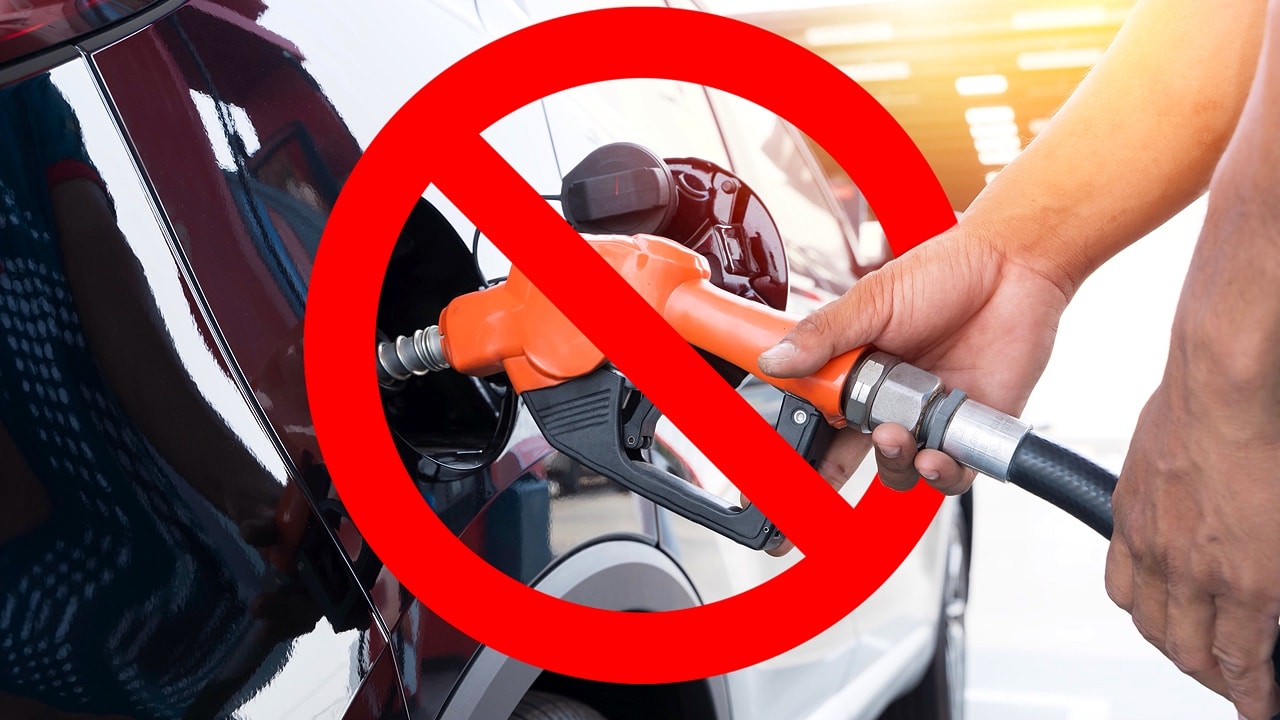12 States Are Banning the Sale of Gas-Powered Cars, 1 That Will Soon

The electric revolution is in full swing. Automotive manufacturers are beginning to switch their focus away from gas-powered and hybrid cars and move towards electric power. The future is very much here.
This has led to some manufacturers deciding to cease production of gas-powered vehicles. Furthermore, some US states are beginning to ban the sale of gasoline cars altogether.
This list contains the 12 states that will ban the sale of gas cars. We’ve also included a state that has yet to ban gas-powered car sales but likely will in the near future.
California

California is, in effect, the state that started all this. California made its move in August 2022, with the Air Resources Board approving a plan that requires all cars, SUVs, and pickup trucks sold in the state to be zero-emissions vehicles by 2035.
It is a bold move for the state, with electric uptake still a little slower than hoped for. ICE-powered cars won’t be banned from the state or taken off the road, but the rules will effectively outlaw the production of gas-powered machines.
Delaware

Delaware is one of the most prominent states that bans the sale of gas-powered cars and prioritizes the sale of electric vehicles and potentially hydrogen as well.
In April 2013, Shawn Garvin, the Secretary of the Department of Natural Resources and Environmental Control of Delaware, approved regulations to follow California’s gas-powered vehicle ban. Their decision shows the strength of California’s decision.
Maine

Following Delaware, Maine is one of the other central states that adopted a ban on gas-powered cars. This followed a civilian petition received in May 2023 urging the regulatory body in the Maine legislature to adopt the Advanced Clean Cars II standards in the state.
This rule requires that zero-emission vehicles account for at least 35 percent of new car and light truck sales by 2026, rising to 68 percent in 2030 and finally reaching 100 percent in 2035. California adopted this first, and the other states are following suit. Maine’s plans, however, are in disrepute at the moment after the state recently voted against limiting the sale of ICE cars by 2032.
Maryland

Maryland will be the seventh state to ban gas-powered cars by 2035. Governor Wes Moore announced this move in March 2023, citing public health as the reason behind the state’s adoption of the Advanced Clean Cars II regulations.
Moore also said that the move would save the state up to $40 million annually in lost productivity from respiratory and cardiovascular illness. Zero-emission cars can do a lot to help the environment simply by cleaning up the air in our towns and cities.
Massachusetts

Massachusetts is an electric pioneer. It was one of the first states to adopt California’s Advanced Clean Cars II legislation. The state has a trigger law, which means it can automatically adopt any emissions policy enacted by California.
This means that Massachusetts should be in a position to ban the sale of gas-powered cars by 2035. The state adopted the policy in the summer of 2022, ensuring its place as one of the first to signal its environmental intentions.
New Jersey

Following its own adoption of the Clean Air Act, New Jersey became the sixth state to prepare for a ban on gas-powered vehicles by 2035 at the earliest. The state adopted the regulations under Section 177 of the act, meaning they must either adhere to federal emissions standards or the more stringent guidelines from California.
New Jersey has been preparing this move for a while. In March 2023, Governor Phil Murphy signed a pair of executive orders that would ensure the state adopted California’s stricter ICE vehicle regulations. The move reduced New Jersey’s previous commitment to EVs only by 15 years, down from 2050.
New York

It is perhaps no surprise that a state as big, vibrant, and as major a city as New York would follow California and adopt the rules of Section 177. The effort to do so in the state began earlier than others, with Governor Kathy Hochul beginning the process as early as September 2022.
The Governor ordered that officials draft regulations requiring all new cars, including pickups and SUVs, sold in the state to have zero emissions by 2035. The regulations were drafted, and the new law was passed by the summer of 2023.
Oregon

Oregon is like New York in that it is preparing to adopt EV-only production much earlier than many other states. In December 2022, Oregon’s Environmental Quality Commission voted to phase out the sale of gas-powered vehicles within the state, with 2035 once again a target date.
The move meant that the state became the fifth to implement California’s Advanced Clean Cars II regulations, following on from California, Massachusetts, Washington, and New York, making it one of the pioneers of the legislation.
Pennsylvania

Pennsylvania is one of the cagier states that has adopted the Californian emissions legislation. While its lawmakers have agreed to adopt the Advanced Clean Cars II regulations, the state hasn’t released any concrete information as to any potential state-specific rules.
This includes whether they are fully committed to the 2035 outlawing date, if they need longer, or perhaps they can even eliminate ICE sales sooner.
Rhode Island

Rhode Island has become the eighth state to adopt Section 177 of the Clean Air Act and follow California’s lead in aiming to ban gas-powered vehicles by 2035 at the earliest. The state put the regulations into effect in May 2023.
Governor Dan McKee was hopeful that the new policy would help to reduce smog in the state and improve the environmental conditions of its residents. He stated that “The Act on Climate put us on the clock for meeting major carbon reduction mandates,” and it is clear he wants to tackle climate change head-on.
Vermont

Vermont was another state that quickly adopted California’s regulations. In November 2022, the state approved changes to its clean-car requirements to ensure the end of ICE-powered car sales in the state.
Vermont actually plans to become an EV-only/zero-emissions state by 2030, earlier than many of the other states on this list. It’s a bold move for Vermont to try to be five years earlier, and it’s only six years away from potentially happening.
Washington

The state of the American capital was another that had a trigger law to automatically adopt the regulations set by California. Washington decided to adopt those rules at the same time as Massachusetts, making both states pioneers when it came to adopting these figures.
Following this move, both states were quick to follow up on California’s legislation, doing so by August 2022. The move will have a particularly strong impact in the capital, Washington D.C., and, in theory, will bring pollution levels in Washington right down.
Colorado

Colorado has yet to adopt the rules brought in by California, but it might not be too far behind. The state has adopted California’s zero-emission policies before; however, as of the time of writing, Governor Jared Polis has rejected an outright ban.
For now, state agencies will focus on making EVs more practical and affordable. The price of EVs is still much higher than that of their ICE counterparts, so anything that helps bring the cost down is welcome news. Colorado is also hoping that by 2032, at least 80 percent of its new car sales will be electric vehicles.





